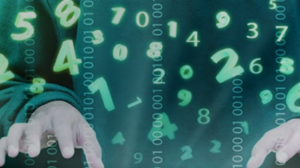
Commenting on the partnership Rohit Maheshwari, Head of Strategy and Products, Subex, said, “The threat of fraud is ever-looming and telecom operators are consistently challenged to keep up with the increasing sophistication of fraudsters in today’s digital ecosystem. While data exchange between operators has always been touted as a solution to the problem, past industry efforts have been limited and largely offline. We, at Subex, are excited about the promise of RAG Wangiri Blockchain as it enables an API based mechanism for telecom operators to exchange data, allowing them to respond to threats faster than ever before.

“Further this will be one of the first large scale blockchain based efforts in the fraud data exchange space. Blockchain functions well in consortium-type environments that require high levels of trust and auditability in the data that is shared between consortium members. We believe this is a great opportunity for the industry to come together and move collectively against fraud. Moreover, from an organizational standpoint, this is in line with our aspiration to play a role towards enabling collaboration and contributing further to the fraud management community.”
The fraud issue for telcos
Fraud is, and continues to be, a major problem for telecom operators. The telcos estimate it may be costing billions of dollars annually. With technology-enabled fraudsters outsmarting traditional fraud management controls, solutions which enable data exchange for telcos in real-time are needed. The first use case focuses on Wangiri fraud, which is a global and increasing problem for telcos and their customers.
By partnering with the RAG Wangiri Blockchain Consortium, Subex aims to provide its customers with a decentralised and cryptographically secure blockchain ledger of fraud-related information. The ledger already has:
- the support by CSPs across the globe
- synchronisation
- availability for all consortium members.
Subex intends to make it easy for users of its ROC Fraud Management solution to update (and use) this common repository. Existing customers – using compatible versions of ROC Fraud Management – will be able to take advantage of the threat intelligence database. Fraud Management provides comprehensive fraud coverage for more than 350 types of fraud, including:
- subscription fraud
- bypass/SIMbox fraud
- toll fraud
- PBX hacking
- international revenue share fraud (IRSF)
- over-the-top (OTT) bypass
- handset fraud
- online sales fraud
- advertisement fraud.
By increasing the number and diversity of CSPs that share information about fraud, the improved quantity, quality and timeliness of fraud-related data will, therefore:
- benefit Subex’s clients
- at the same time assist the telco industry.
The Risk & Assurance Group
The Risk & Assurance Group (RAG) seeks to improve the practice of risk management, business assurance, fraud management and security within the providers of electronic communications services (telcos for the most part). RAG is a not-for-profit corporation run by people with expertise in the field of risk and assurance within telcos.
RAG’s goal is to facilitate the education and networking of professionals in order to:
- improve standards of performance
- reduce waste
- better serve customers.
Practitioners attend RAG events and access RAG’s online services free of charge. Financial support comes from specialist vendors with an interest in highlighting the importance field work.

“We are thrilled to be working with Subex on this global initiative,” said Eric Priezkalns, Chief Executive of RAG. “The telecoms industry has repeatedly tried to use common databases to share information about crime, but the results have usually been disappointing. Put simply, old technology meant updating the database was too slow and burdensome.
“The distributed and secure nature of Blockchain eliminates many obstacles to the exchange of data, which is why a wide range of telcos have already joined our anti-wangiri consortium. Linking Subex’s market-leading Fraud Management System to our Blockchain ledger will make it even more straightforward for telcos to contribute and receive fraud intelligence from other telcos within their country and overseas.”
Wangiri fraud and beyond
Wangiri fraud ((literally, “One (ring) and cut”) originated in Japan and relies upon the recipient’s innate curiosity. Furthermore, the repetitive nature of the fraud (sufferer’s have reported that it is not unusual to receive dozens of missed calls in a single day) adds to the pressure to call back.
To make Wangiri fraud work, scam artists buy phone numbers on the dark web in order to dial phone users in other countries. They then disconnect the call. The aim of the scam is to encourage those who see a missed call – enabled by smarter phones, especially mobiles – to call the missed number, which initiates the fraud.
The call back generally routes to an expensive premium rate number. Then pressure applies to the caller to stay on the line for as long as possible. The longer on the line, the more money the scammers ultimately make and the higher the cost to the network subscriber – and ultimately to telcos as they have to sort out complaints.
Besides Wangiri fraud, the consortium will also look to increase its coverage to areas such as:
- international premium range fraud numbering
- fraudulent IP address information
- stolen devices in the future.
Enterprise Times: what does this mean
A question – one not often posed – is whether blockchain:
- ‘encourages’ fraud (as in Bitcoin and other anonymous crypto-assets)?
- is a more of a tool to fight fraud?
In the case of this link up – between Subex and RAG – it belongs clearly to the latter category. Wangiri fraud is insidious and expensive – for customers and for telcos. Anything which reduces the abilities of fraudsters and scammers is welcome.


























